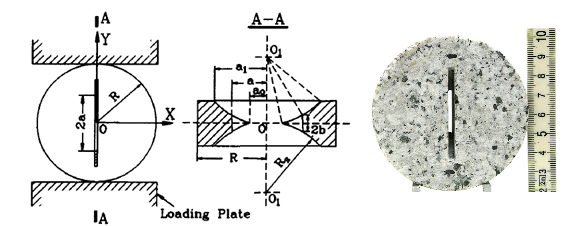Project: Characterization of the fracture behavior of quasi-brittle rock
Geo-energy projects have attempted to use hydraulic stimulations to improve the transmissivity between wells and create a network of fractures that allows for sustainable extraction of fluid and/or heat stored
in the solid rock matrix. So far, this has not been designed properly, partially due to inadequate measurement of rock fracture toughness in the laboratory. Within the project ProcessFrac, we will develop new reliable methods to characterize the fracture behavior of reservoir rocks in the laboratory, taking into account the biaxiality dependence of fracture toughness stemming from the finite process zone and specimen size, as well as the influence of temperature. Mixing both numerical and laboratory-based studies, our project builds on a rigorous approach to fracture mechanics, supported by recent experimental methods borrowed from statistical physics. We ultimately propose novel ways to upscale
fracture toughness measurements to realistic crack networks under reservoir temperature conditions using Linear Elastic Fracture Mechanics, which constitutes a well-established framework in the geo-energy
industry.
Fracture toughness characterisation of Yosemite Granitic Rocks (California, USA). Collaboration project with USGS (B. Collins), Greg Stock (Yosemite National Park), and UNIL

Figure 1. On the right: CCNBD specimen geometry (after ISRM, 1995); on the left: a CCNBD specimen of Yosemite Granite before the test.
This research is developing new testing procedures for investigating the damage mechanisms of granitic rocks from Yosemite Valley, California (USA). The main objective is trying to reproduce the thermal effects on exposed rock slopes and to quantify their influence on rock fracture toughness. In particular, based on previous results obtained from a first testing campaign for the geomechanical characterisation of these rocks (i.e. uniaxial and triaxial compression tests, tensile test, static fracture toughness tests), a specific procedure for cyclic fracture toughness tests is being developed. The tests are being conducted on CCNBD samples (see Figure 1 here below), using a specific press that allows the application of cyclic loads that vary the maximum load, amplitude, and frequency. This research should assist in explaining why rock falls occur on cliffs subject to diurnal cycles of heating and cooling.